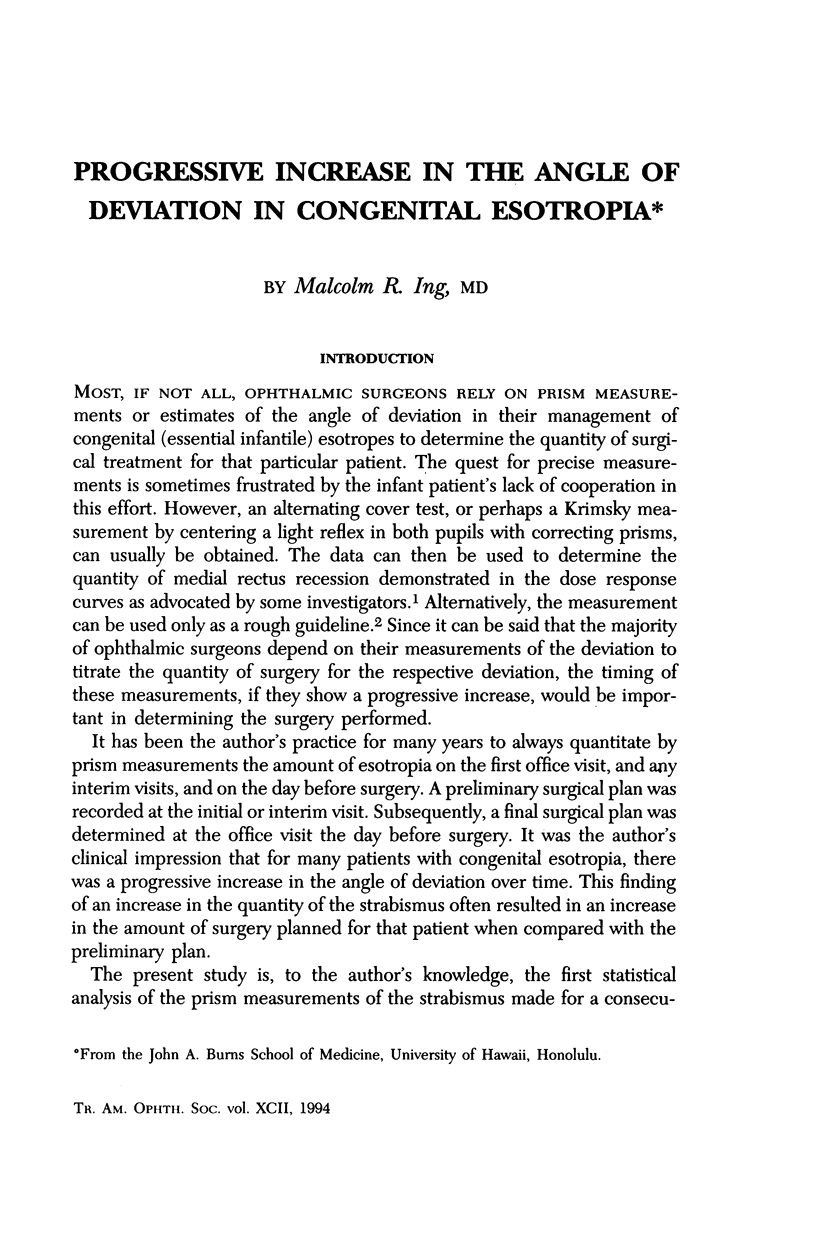Abstract
The majority of patients with congenital esotropia in this consecutive series of 41 patients showed an increase in the angle of deviation when followed over an average of 3 months. The ages at the initial measurement and surgery, the cycloplegic refraction, and the clinical response to patching could not be used to identify those patients with a progressive increase in the quantity of the deviation. It was found, however, that if the preliminary surgical plan was adjusted (as it was in the majority of the patients in this series) to reflect the latest measurements obtained the day before surgery, a relatively high percentage of patients (90%) could be found to have achieved satisfactory alignment by the 6-week postoperative visit.
Full text
PDF














Selected References
These references are in PubMed. This may not be the complete list of references from this article.
- Bateman J. B., Parks M. M., Wheeler N. Discriminant analysis of congenital esotropia surgery. Predictor variables for short- and long-term outcomes. Ophthalmology. 1983 Oct;90(10):1146–1153. doi: 10.1016/s0161-6420(83)34414-6. [DOI] [PubMed] [Google Scholar]
- Ing M. R. Early surgical alignment for congenital esotropia. Trans Am Ophthalmol Soc. 1981;79:625–663. [PMC free article] [PubMed] [Google Scholar]
- Weakley D. R., Jr, Parks M. M. Results from 7-mm bilateral recessions of the medial rectus muscles for congenital esotropia. Ophthalmic Surg. 1990 Dec;21(12):827–830. [PubMed] [Google Scholar]


